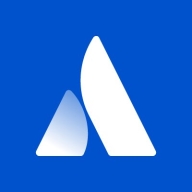

GoCD and Atlassian ALM compete in application lifecycle management. Atlassian ALM has the upper hand because of its robust features, despite concerns over higher pricing, offering more perceived value.
Features: GoCD stands out for continuous delivery, pipeline management, and scalability. Atlassian ALM is known for integrated tools, extensive project management, and robust reporting, providing a more comprehensive solution. Organizations looking for integration benefit more from Atlassian ALM's range of features.
Room for Improvement: GoCD could expand its plugin offerings to enhance flexibility and improve support for larger teams. Better documentation on complex configurations would be beneficial. Improved UI customization for specific enterprise needs is an area to grow. Atlassian ALM may improve by refining integration between products, offering more streamlined setups, and reducing learning curves for smaller teams. Enhancing open-source accessibility could attract a broader user base.
Ease of Deployment and Customer Service: GoCD offers straightforward deployment with accessible support, providing seamless user experiences. Atlassian ALM involves more complex setups but benefits from detailed documentation and responsive customer service, appealing to large enterprises seeking robust support.
Pricing and ROI: GoCD is cost-effective with strong ROI and lower setup costs. Atlassian ALM, despite a higher entry price, provides long-term value through extensive features and integrations, often seen as a worthwhile investment. The difference in initial investment highlights Atlassian ALM's broader functionality.

How to use Atlassian to manage application lifecycle: Atlassian builds software to pull together all the elements of application lifecycle management. Product management, developers, Q/A, dev ops, and business stake holders all have their own ways of interacting with application lifecycle management and Atlassian splits up the process into a few buckets.
1) Collaborate to plan and envision work
Atlassian's Confluence is a collaboration platform for building and driving consensus. Call stake holders in to give approval, comment on, and share pages and integrate with the rest of the development toolchain.
2) Build and track roadmaps
Atlassian's JIRA Software offers incredibly flexible project management with custom workflows, plugins, and high visibility rollups through JIRA Portfolio. Issues can be embedded right in confluence, or be used to kick off new branches in version control. Keep everyone on the same page with project progress.
3) Track and deploy code
Atlassian's Bitbucket is the world's most robust Git solution. The ability to deploy multiple-nodes with failover, global mirroring for super fast clones, and powerful code review control set it apart from competition. Bitbucket also has a mature plugin and hooks system that allows extensions and connection to a suite of CI software.
4) Support and Iterate
Track support requests, bugs, and route users in the right direction with JIRA Service Desk. With the same custom workflow engine as JIRA Software, a tight integration with the rest of the stack, and a knowledge base function make it a powerful addition to the ALM stack.
5) Tie it together
ChatOps helps tie every part of the ALM together. Get stake holders in the same room to manage a project, teams in the same page to manage their work, or plugin automated members to report on CI status, pull requests, page changes in Confluence, or bug reports. Like every piece of Atlassian's ALM there is a mature API for extending plugins and everything can be hosted behind your own firewall.
We monitor all Application Lifecycle Management (ALM) Suites reviews to prevent fraudulent reviews and keep review quality high. We do not post reviews by company employees or direct competitors. We validate each review for authenticity via cross-reference with LinkedIn, and personal follow-up with the reviewer when necessary.